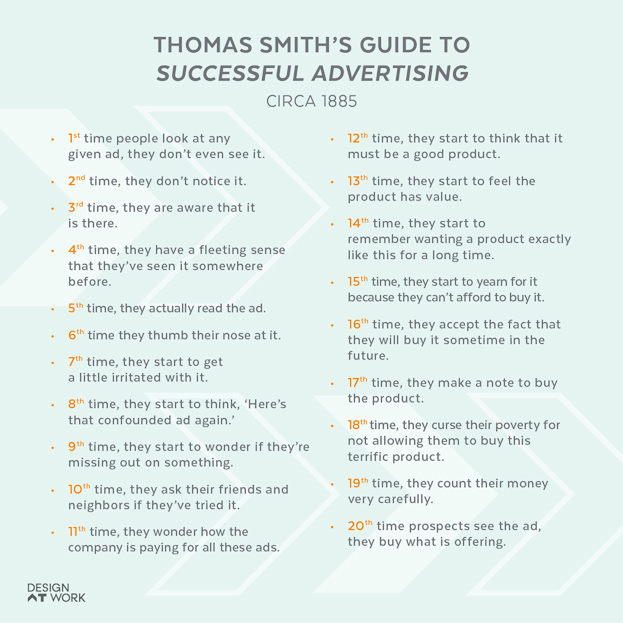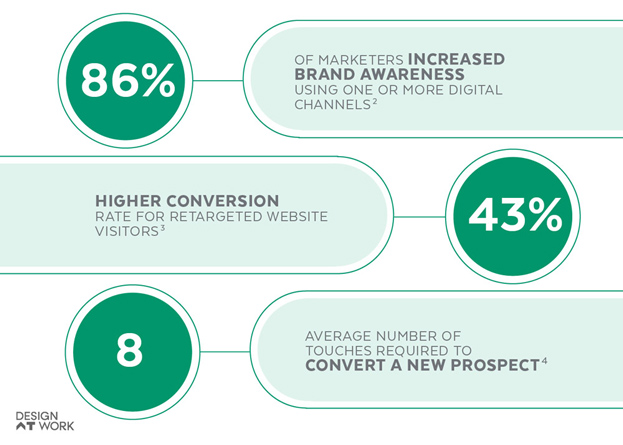Why Balancing Reach and Frequency
is Important in Traditional and Digital
Advertising Campaigns.

What’s more important — reach or frequency? Advertisers have been asking themselves this question for well over a century. The term “reach” refers to the amount of people exposed to an ad, whereas “frequency” denotes the number of times consumers see an ad. Determining which method to prioritize in your marketing strategy depends on your business, your consumers and the goals of your campaign.
In this article, we’ll take a closer look at the difference between reach and frequency — and explain how to balance the two in your marketing efforts.
What is Reach in Marketing?

Reach measures the number of consumers who have seen or been exposed to a particular message or advertisement. For example, let’s say you want to advertise your company’s services on a billboard. You could approximate the billboard’s potential reach by considering the average number of cars that pass the billboard each day. With traditional advertising, it’s impossible to measure reach (or any other metric) precisely, but estimates can give you a good idea of how effective your efforts will be.
Digital marketing, on the other hand, allows you to track campaigns with a lot more precision. You can see exactly how many unique users saw your social media post, opened your email or viewed your digital ad, allowing you to continually refine your strategy in response to user behavior.
When Should You Prioritize Reach?
There are times when it makes sense to cast a wide net with your marketing campaign. Let’s look at a few of these situations.
You’re A Household Name.
If your company already enjoys strong brand recognition and loyalty within its market, reach may be more important than frequency. Companies with limited competition and wide recognition can focus on getting as many eyes on their ads as possible, rather than repeatedly re-introducing themselves to educate and entice prospects.
You’re Introducing a New Product or Service.
Even if you’re a smaller company with a niche audience, reach is especially important when bringing a new product or service to market or entering an emerging market. Why? Because at this stage, you’re still learning about your target audience. The more users you reach, the more data you can compile to help you define and build relationships with your ideal customers.
You’re Building Brand Recognition.
Broadly speaking, reach matters more when your goal is to acquire new customers. When generating brand awareness or educating consumers on the value of your product or service, you want to reach as many people as possible.
What Is Frequency in Marketing?

Frequency refers to the amount of times consumers are exposed to the same advertisement or campaign. It takes time and, more importantly, repeated touchpoints to pique the interest of prospects — and convert them into loyal customers.
In 1885, London businessman Thomas Smith wrote Successful Advertising, in which he describes 20 potential points of connection required to convince one customer to make a purchase. “The first time people look at any given ad, they don’t even see it,” he writes. By the fifth time, “they actually read the ad,” and finally, after several stages of consideration and planning, they purchase the product1.
Consumer behavior remains remarkably similar today, though the products and channels through which we advertise have changed. Frequent exposures create a more positive perception of your company and increase the likelihood of closing sales. These digital marketing statistics lend compelling evidence to support what advertisers have known for years.

When Should You Prioritize
Frequency?
Depending on the demographic breadth of your target audience, your level of brand recognition and the goals of your campaign, frequency may be more important than reach. Here are some examples of when it’s a good idea to focus on frequency.
You Have a Niche Audience.
If your products or services meet the needs of a limited group of consumers, it makes more sense to devote your budget to highly targeted marketing delivered repeatedly over a period of time. If you’re selling lactose-free ice cream, for example, market directly to lactose-intolerant consumers, rather than casting a wide net that will likely include some fans of dairy-based products. In other words, focus on nurturing relationships with consumers who already want what you’re selling.
You Have Limited Brand Recognition.
For companies in the process of establishing themselves in a market, repetition is key. Multiple touchpoints are required to introduce your brand, educate consumers on your product or service and establish a connection between the two. Think of it this way: You probably wouldn’t remember the name of someone you met briefly at a cocktail party. But if you happened to run into that person at the grocery store, and then again at your favorite restaurant, you’d be far more likely to remember them.
You Have Stiff Competition.
The more competition you’re up against, the more important it is to gain repeated exposure to your target audience — and stand out from the crowd when you do. Returning to the example of the cocktail party acquaintance, if your interactions with the person were unpleasant, then subsequent meetings would likely lower your esteem. If, on the other hand, you found them uniquely fun to talk to, then your opinion would be improved. The same is true for brands and customers. Your goal is to be the fun cocktail party guest who gets more interesting with each interaction.

With the right mix of reach and frequency — and a solid understanding of your company, target audience and goals — you can generate new leads, nurture customer relationships and increase revenue. Ready to develop a savvy approach to marketing your business? Let’s talk.
Marketing Emails You’ll Actually Want To Read.
Get marketing tips and news sent to your inbox.
Sources:
- The Secret Sauce of the Customer Journey, Forbes
- B2B Content Marketing 2020: Benchmarks, Budgets, and Trends — North America, Content Marketing Institute
- The Power of Retargeting: Computing and High Tech by the Numbers, Criteo
- Top Performance in Sales Prospecting, Rain Group

